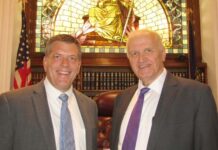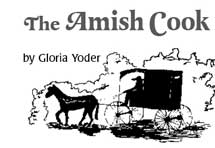In April 2015 my husband, John, and I launched our kayaks in the Wabash River in Fort Recovery, Ohio, and paddled the remaining 485 miles on this historic river to the Ohio River. We then traveled 133 miles on the Ohio to the Mississippi River. Read about this first part of our trip in Paddling Edna (Part One).
In Paddling Edna (Part Two) Into the Sea (to be released this spring), you can read about the rest of our trip as we traveled the 971 miles of the lower Mississippi River from just below Cairo, Ill., to the Gulf of Mexico.
The following is based on my journal entry from …
04-08-2015
Even though we are only four days into our trip, we are developing routines. We spend the first few minutes of our day responding to e-mails and texts, checking our blog, reading devotions, and verifying the weather forecast. The radar this morning contained a lot of yellow and red — not safe colors when traveling on a river. The hourly forecast showed storms would arrive this morning and be out of the area soon after noon.
Before launching at 12:30, I said my daily prayer: “Keep us upright and safe.”
I love the moment I slide my paddle blade into the river, take my first slice of the water, and glide away from the previous night’s shore toward another location. Leaving the banks, I wonder what sights I will discover from my river view. Only a privileged few have seen what I witness every day. Will I see a deer that has wandered down a wildlife path to the water’s edge, drinking from the flowing river? Will I set eyes on an eagle soaring? Will I glimpse an eaglet poking its head above the edge of its nest, waiting for its parent to return with lunch? Will a squirrel race us along the bank? I hope as I become comfortable in our wilderness life the river becomes our home and not something to overcome, giving me permission to examine our environment and note its contrast to society life.
Over the last year, John’s investigation revealed a boat ramp at Markle. Since the river view of boat ramps differs from the road view, in April 2014 we did a trial paddle from Bluffton to Markle to make sure we would recognize the takeout.
While we paddled this section on our trial, shadows floated across the water’s surface. I saw several large birds soaring over us. Turkey vultures hover as a group, so that’s what they must be. Since John is familiar with many varieties of birds, I thought I would impress him with my recognition. “Are those turkey vultures?”
“I don’t think so,” he said. He studied them a little longer. “I think they are great blue herons.” Since great blue herons tend to be skittish and usually fly away, hovering herons seemed unusual. Then again, how much time have I spent on the river to be an expert?
Then I counted approximately 30 spindly squirrel-like nests high in some sycamore trees. Chicks’ heads peeked above the top of their homes. Large birds sitting in trees on frail-looking twig bowls seemed contrary to reason. I also don’t remember ever seeing a group of blue herons. Think about this … great blue herons nest in a rookery in trees but do not usually live in a community. Geese nest on the ground and not always in groups but live and travel as a gaggle. Opposites in nature.
This year our confidence level was low that we would find the rookery because locations on the river are difficult to identify. The river is a living body of water as it and its banks constantly change. On our trial paddle, we first noticed the birds soaring above, followed by the nests in the trees. Great blue herons apparently use the same nests year after year like eagles do. Recognizing the maternity ward again today made me feel even more connected to the Wabash River — our river. Our view from the river is proving to be educational. A different view — and different knowledge.
As we approached the 13-mile mark, I was concerned we would not recognize the boat launch. On our trial paddle our yellow Nissan Xterra waited for us there. The possibility of not recognizing the area because this year’s river is not the same as last year’s reminded me of the words of the philosopher Heraclitus: “No man ever steps into the same river twice, for it is not the same river and he is not the same man.” (I need to contemplate the “not the same man” part of this statement later.)
After paddling three and a half hours, John said, “There it is!”
Here’s the Thing: The river view from Bluffton to Markle is one the few people experience. A slower pace in the middle of nature. Bluffton to Markle by road is fast with a quick glimpse of nature here and there. When crossing a river on a bridge, your view is only a few hundred yards and for a moment (if you can see it at all). Access to the river by the White Bridge in Bluffton is easy. The 13 miles from Bluffton to Markle requires only a boat and personal flotation device (to be worn at all times — a subject for another week). If you can’t take advantage of the river view, I encourage you to slow down, sit on a bench on the Rivergreenway, and take in the sights and sounds of nature.
Note: Follow us at Separate Boats on Instagram, Facebook, or on our webpage: www.separateboats.com
jlabnet@gmail.com
———
Editor’s Note: This is one of a series of articles written by a group of retired teachers — LaNae Abnet, Ken Ballinger, Billy Kreigh, Kathy Schwartz, and Anna Spalding. Their intent is to spur discussions at the dinner table and elsewhere. You may also voice your thoughts and reactions via The News-Banner’s letters to editor.



